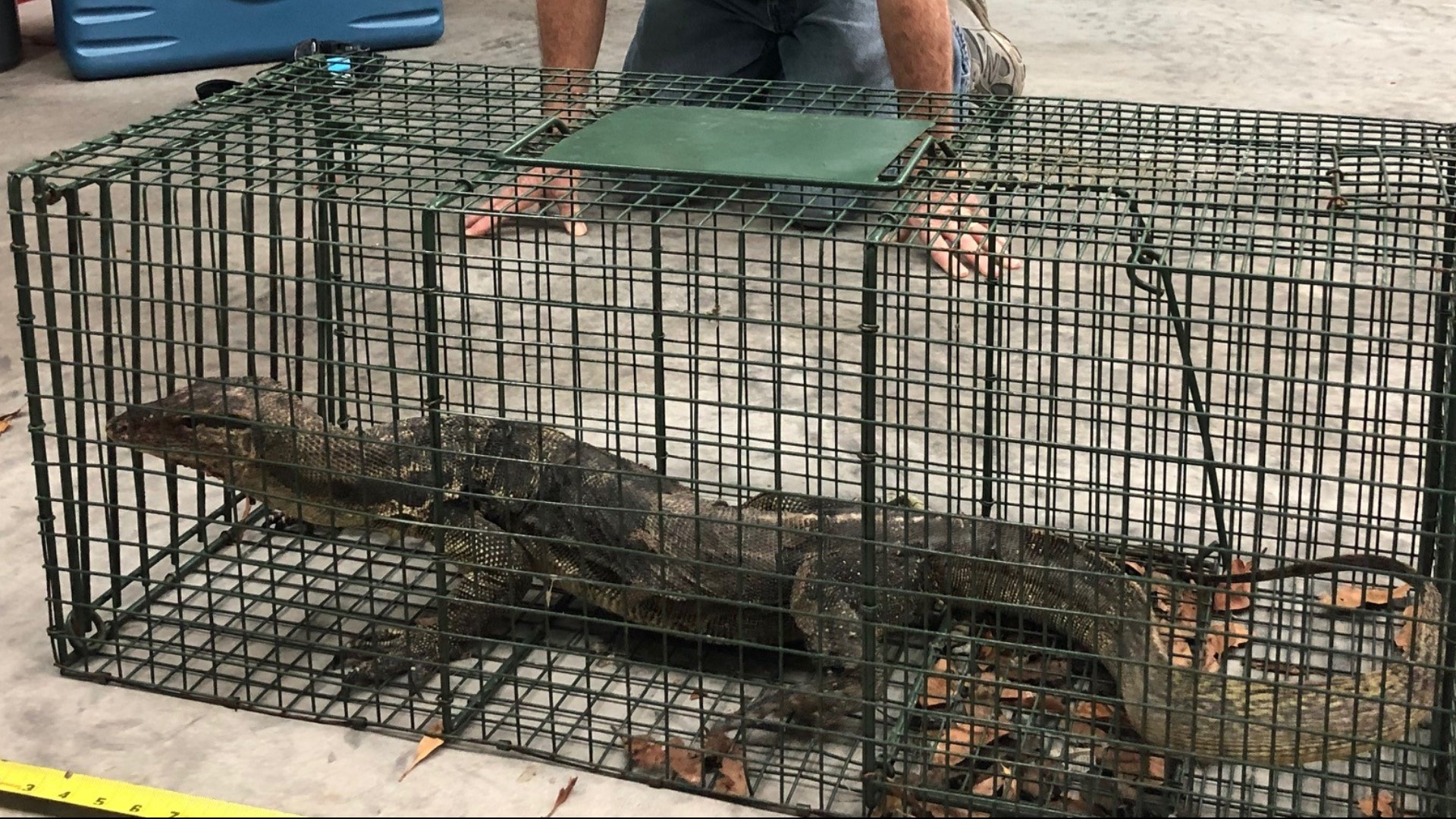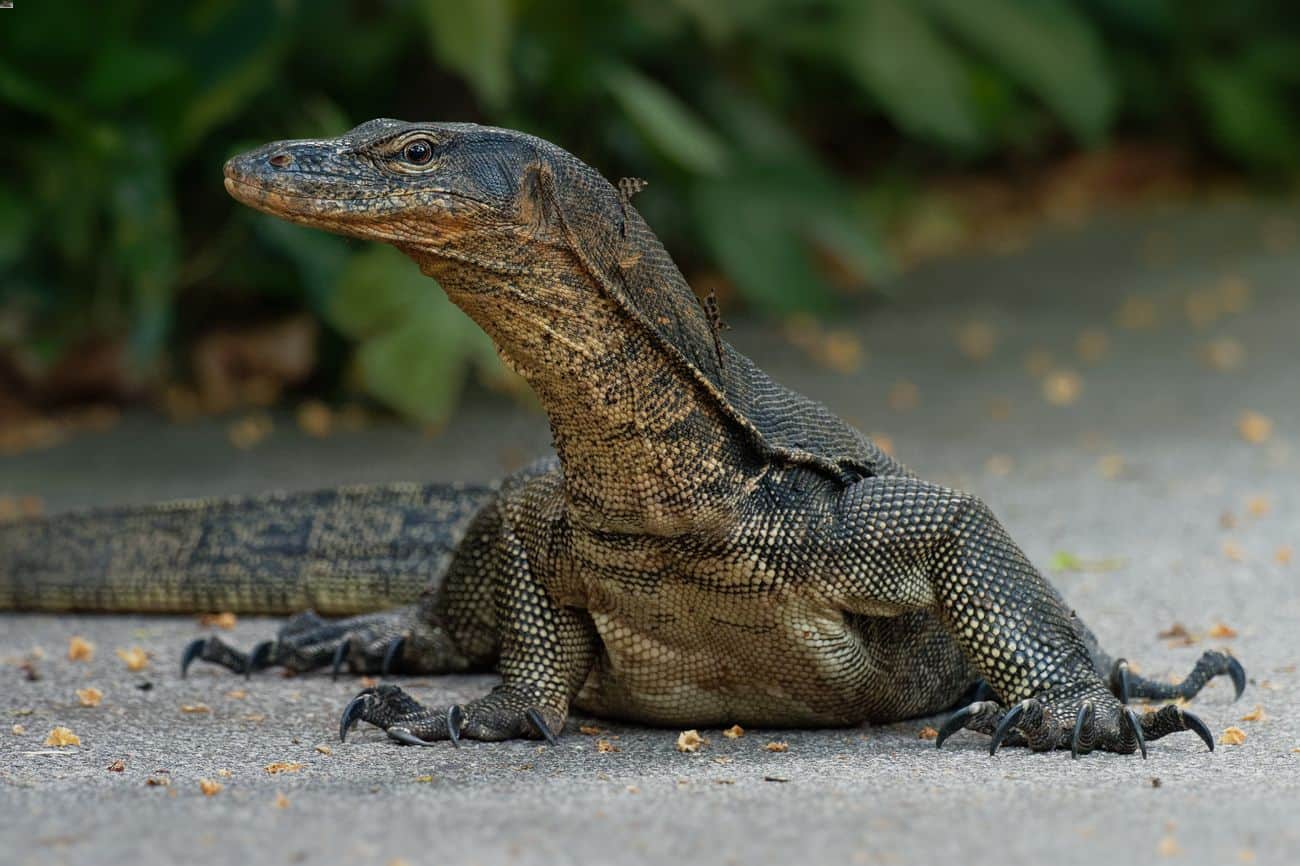Asian Water Monitor Habitat and Distribution in Florida: Asian Water Monitor Florida
Asian water monitor florida – Asian water monitors are native to Southeast Asia, where they inhabit a wide range of habitats, including freshwater swamps, marshes, rivers, and mangrove forests. They are semi-aquatic and spend a significant amount of time in the water, but they also venture onto land to bask and forage.
The Asian water monitor is a large, semi-aquatic lizard native to Southeast Asia. It is an opportunistic predator that feeds on a variety of animals, including fish, frogs, and small mammals. The lizard is also known for its ability to climb trees and swim long distances.
Just like the trooping the colour kate middleton , the Asian water monitor is a fascinating creature that is well-adapted to its environment.
In Florida, Asian water monitors have been introduced and have established populations in a variety of habitats, including freshwater marshes, canals, and urban areas. They are particularly common in the southern part of the state, where the climate is warm and humid.
The Asian water monitor lizard, an invasive species in Florida, poses a threat to native wildlife. However, the recent layoffs at John Deere have raised concerns about the availability of resources to combat this invasive species. Despite these setbacks, efforts to protect Florida’s fragile ecosystem from the Asian water monitor must continue.
Preferred Habitats
Asian water monitors prefer habitats with access to water, such as marshes, canals, and ponds. They also use trees and other vegetation for cover and basking.
In urban areas, Asian water monitors have been known to take up residence in storm drains and other man-made structures. They are also attracted to areas with abundant food sources, such as garbage dumps and pet food bowls.
Ecological Impacts of Asian Water Monitors in Florida

The introduction of Asian water monitors to Florida has raised concerns about their potential ecological impacts on native wildlife. These large, carnivorous reptiles have the potential to disrupt ecosystems by preying on native species and competing for resources.
Predation on Native Species
Asian water monitors are opportunistic predators that feed on a wide variety of animals, including fish, amphibians, reptiles, birds, and mammals. In Florida, they have been documented preying on native species such as American alligators, Florida box turtles, and wading birds. Predation by Asian water monitors can have a significant impact on native populations, especially for species that are already threatened or endangered.
Competition for Resources
In addition to predation, Asian water monitors can also compete with native species for resources such as food and habitat. They are known to bask on the same logs as native alligators and turtles, and they may also compete for food sources such as fish and small mammals. Competition from Asian water monitors can reduce the availability of resources for native species, which can lead to population declines.
Transmission of Diseases, Asian water monitor florida
Asian water monitors can also transmit diseases to native wildlife and humans. They have been found to carry a variety of pathogens, including Salmonella, E. coli, and Campylobacter. These pathogens can cause illness in both animals and humans, and they can also contribute to the spread of antibiotic resistance.
Management and Control of Asian Water Monitors in Florida

Wildlife agencies in Florida employ various management and control strategies to address the Asian water monitor population. These include:
- Population monitoring: Agencies conduct surveys and collect data to track the distribution and abundance of Asian water monitors.
- Trapping and removal: Wildlife officials use traps to capture and remove Asian water monitors from sensitive areas, such as residential neighborhoods and conservation lands.
- Habitat modification: Agencies modify habitats to make them less suitable for Asian water monitors, such as removing dense vegetation and creating barriers to prevent their movement.
- Public outreach and education: Agencies educate the public about the impacts of Asian water monitors and encourage responsible behavior, such as not feeding them or releasing them into the wild.
The effectiveness of these strategies varies depending on the specific context and resources available. Population monitoring provides valuable data for understanding the distribution and abundance of Asian water monitors, but it can be challenging to accurately estimate their population size. Trapping and removal can be effective in reducing local populations, but it is labor-intensive and requires ongoing effort to prevent recolonization. Habitat modification can be effective in deterring Asian water monitors from certain areas, but it can also be costly and time-consuming. Public outreach and education are essential for raising awareness about the issue and encouraging responsible behavior, but their impact on reducing the overall population is difficult to quantify.
Potential Future Management Options
Future management options for Asian water monitors in Florida include:
- Research and development of new control methods: Agencies are exploring new and innovative methods for controlling Asian water monitors, such as targeted baiting and the use of genetic tools.
- Increased public involvement: Agencies are seeking ways to engage the public in monitoring and control efforts, such as through citizen science programs and community-based initiatives.
- Interagency collaboration: Agencies are working together to develop and implement coordinated management strategies across jurisdictional boundaries.
- Adaptive management: Agencies are using adaptive management principles to evaluate the effectiveness of management strategies and make adjustments as needed based on monitoring data and new information.
These future management options hold promise for improving the effectiveness of Asian water monitor control in Florida. By continuing to monitor the population, develop new control methods, engage the public, and collaborate with other agencies, wildlife agencies can work towards reducing the impacts of this invasive species on the state’s native wildlife and ecosystems.
Asian water monitors are formidable predators, but even they can be disrupted by unexpected events. Like the recent Southwest flight cancellations, which left many travelers stranded. To understand the reasons behind these cancellations, click here. While the situation is regrettable, it serves as a reminder that even the most adaptable creatures can face challenges.
Just as the water monitor must adjust to changing water levels, we must navigate the complexities of modern travel.
The Asian water monitor lizard, a formidable predator in Florida’s waterways, shares a surprising connection with the world of college football. As the Clemson Tigers prepare to face off against the Coastal Carolina Chanticleers, fans of both teams might find solace in the fact that the water monitor’s hunting prowess is matched only by the determination of these two football powerhouses.
Clemson vs Coastal Carolina promises to be a gripping contest, just as the water monitor’s pursuit of its prey is a captivating spectacle.
The Asian water monitor, a semi-aquatic lizard native to Southeast Asia, has been spotted in Florida. Its presence raises concerns about the potential impact on native wildlife. Driving with a suspended license is a serious offense that can result in hefty fines and even jail time.
Just like the Asian water monitor, operating a vehicle with a suspended license poses a significant risk to the driver and others on the road. Like the Asian water monitor’s impact on Florida’s ecosystem, driving with a suspended license can have severe consequences.